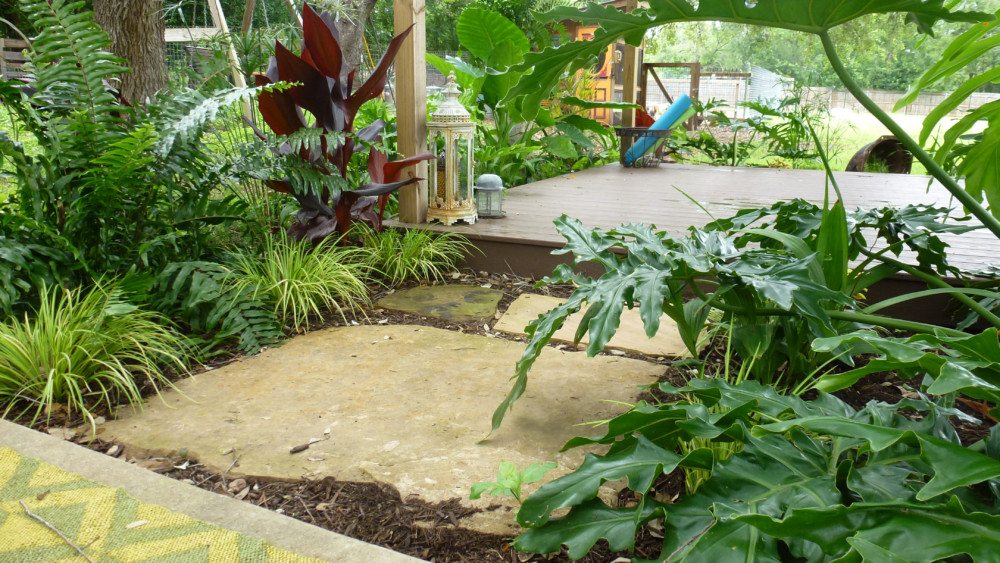
The Benefits of the Garden
In the spring of 2012, I was diagnosed with breast cancer at age 49. I spent the rest of the year in surgery and treatment, and then began a multi-year process of recovery and healing. I was fortunate to have excellent healthcare and people around me who were supportive of my journey, but I found a surprising additional resource in my healing — my own backyard garden.
I shouldn’t have been surprised — after all, I’m a landscape designer, author and speaker. I know how healing and restorative gardens and their plants are, but for some reason, while I was in the midst of my own struggle, I temporarily forgot.
My then-fiancé took an extraordinary step to remind me (I’ll tell you about that in a minute), and the domino effect began. I started to think about what I could do to remind others who, like me, had forgotten, and that’s when I wrote “The Cancer Survivor’s Garden Companion: Cultivating Hope, Healing and Joy in the Ground Beneath Your Feet.”
As garden retailers (and communicators), we play a huge role in the lives of our customer and client base. We not only provide them beauty, but we connect them to the joys of gardening. We give them access to grow their own food, teach them how to make their soil healthy and assist them in choosing plants for their own outdoor haven. We can also remind them that these gardens and the plants in them are the best teachers of wellness and balance, and that the garden is there for them as a place of restoration, relaxation and reconnection.
While there are nearly unlimited ways that we can help gardeners make these connections, here are a few of my favorite, go-to suggestions.
These are easy plants and structures for most people to incorporate into either a new or an existing garden, and they all provide layers of wellness that is difficult to find in any other way — but we’re not surprised, are we? We’re gardeners.
Big Leafed Tropical Plants
Whether used indoors as houseplants or outdoors in the garden, tropical plants pack a punch. They provide drama, instant focal points and interesting shapes and textures.
And remember when I alluded to what my fiancé did for me after I finished my chemotherapy? Here’s the quick story: I’d been in California at a flower and garden show, and upon my arrival home, realized what Brett had been up to while I was gone. He and our buddy, Jim, had built a freestanding yoga deck for me in the backyard as a way of encouraging my recovery. It was the most beautiful and touching gesture I’d ever experienced, and I quickly went to work creating a tropical paradise around it.
Why tropicals? Because their jumbo-sized leaves create a sense of presence and grounding in a garden. The oversized forms are relaxing and calming in addition to being architectural.
Elephant ears, cannas, philodendron, crotons and palms serve up a healthy dose of color, form, texture and height — ideal for creating a secluded oasis, a hidden retreat or an enclosed getaway. I love a mix of 2/3 large leaf plants to 1/3 small leaf plants — this seems to be the ideal, almost magical, ratio of size and form to add harmony and balance to any garden.
Intimate Seating
I love opportunities in the garden for sitting for a moment … or even for many moments. Small benches placed along a pathway, a bistro table and chairs tucked into the garden, seating pulled up around a cozy fire pit … all are places to sit that encourage lingering.
Small benches or single chairs are perfect for one person to have some alone time, while several seats invite small groups to gather for a shared meal or cocktail along with great conversation, laughter and storytelling — all with the garden as a backdrop.
When I was going through treatment and recovery, I found solace in sitting for long periods in my garden, doing absolutely nothing. While I certainly walked and wandered as well, it was the sitting and relaxing that allowed me to breathe in the fresh air, melt into the sunshine on my face, and take in the birds chirping and my chickens clucking. I have flat-topped boulders for seating around my fire pit, broad steps on my yoga deck for resting, and hanging single-person tree hammocks with drink holders. Whatever kind of sitting I feel like doing, I’ve got it covered in my garden.
I notice things while sitting in my garden that I wouldn’t otherwise tune into because my brain is slowed and distractions are at a minimum. I’m able to appreciate the sun filtering through the elephant ears, the bamboo muhly peeking through my fence and the shadows cast on my yoga deck by the towering oak trees. Garden seating says, “We’re glad you’re here; why don’t you stay a while?”
Water Features
There’s something about water in the garden that is supremely soothing. I’m not talking about the big and splashy water features; I’m talking about the ones that bubble, trickle, swirl and flow. For eons, water has been associated with purity, fertility and the flow of life — little wonder that we are so drawn to it.
Water features help to drown out noise from nearby traffic, encourage relaxation, inspire creativity and enhance your mood. From simple urn bubblers to reflecting ponds, tabletop fountains and wall features, there’s a water feature for every size garden.
Before I moved to my 1-acre property, I lived in an apartment with a 150-square-foot balcony where I created a sitting area with a New Orleans-inspired wall fountain and ferns planted below. Every morning, I’d bring my cup of coffee out to my balcony, sit at the bistro table, plug in my fountain, and imagine I was in the French Quarter waiting for beignets to be served. Never mind that the high school was right next door and the marching band had early morning practice, that my balcony faced the parking lot of the home improvement store across the street, or that the busy interstate was just beyond the home improvement store — sitting by my fountain with ferns at my feet gave me a few minutes of bliss before starting my day.
Pro Tips
Whether promoting one of these scenes or a number of other healing gardens, here are some retailer tips:
• Add signage to all of these elements in your garden center, pointing out the wellness qualities.
• Create vignettes with seating to encourage guests to linger.
• Train staff to educate guests on how to use and incorporate plants, structures, and accessories.
• Organize seminars, classes, special events and make-it-and-take-it workshops to inspire guests in creating healing havens in their own space at home. Bring in a speaker and team up with your local treatment center, hospital or wellness center to sponsor it.
• Highlight wellness tips, healthy plants, relaxing structures and accessories in your garden center newsletter.
 Jenny Peterson is an Austin, Texas-based garden designer, author and speaker. She is also a two-time cancer survivor, most recently with a 2012 bout with breast cancer. Her long road through cancer treatment was hard, emotional and often deeply depressing.
Jenny Peterson is an Austin, Texas-based garden designer, author and speaker. She is also a two-time cancer survivor, most recently with a 2012 bout with breast cancer. Her long road through cancer treatment was hard, emotional and often deeply depressing.
The one thing that pulled her out of the darkness was her desire to be able to garden again — and out of that experience, she wrote “The Cancer Survivor’s Garden Companion: Cultivating Hope, Healing & Joy in the Ground Beneath Your Feet” (St. Lynn’s Press, 2016).
Peterson credits her garden with clearing her mental fog and overcoming her depression, physical limitations and pain. The “Cancer Survivor’s Garden Companion” explores the therapeutic benefits of this vital “earth connection,” focusing on tips, advice and suggestions to benefit mind, body and spirit. With gentle empathy, beautiful photographs and easy how-to steps, she shows others how to create their own backyard haven for healing — a personal restorative garden — with a bonus of well-grounded guidance about diet, exercise, mental focus and spiritual renewal.
Peterson can be reached at [email protected].



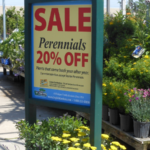

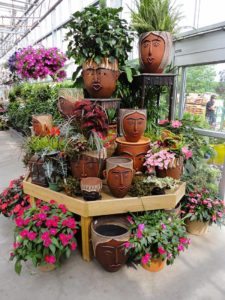
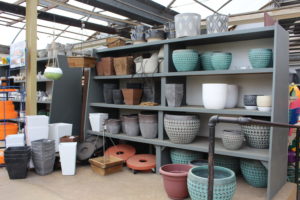

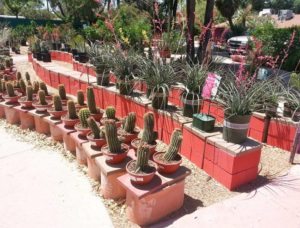
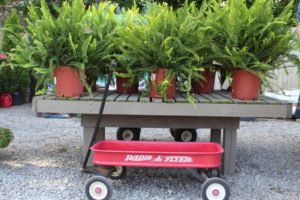
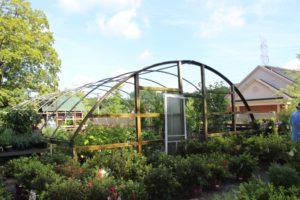


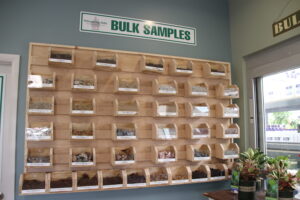
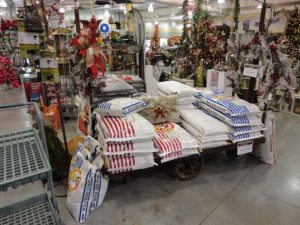

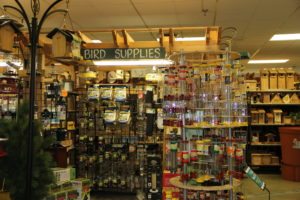
 Videos
Videos





